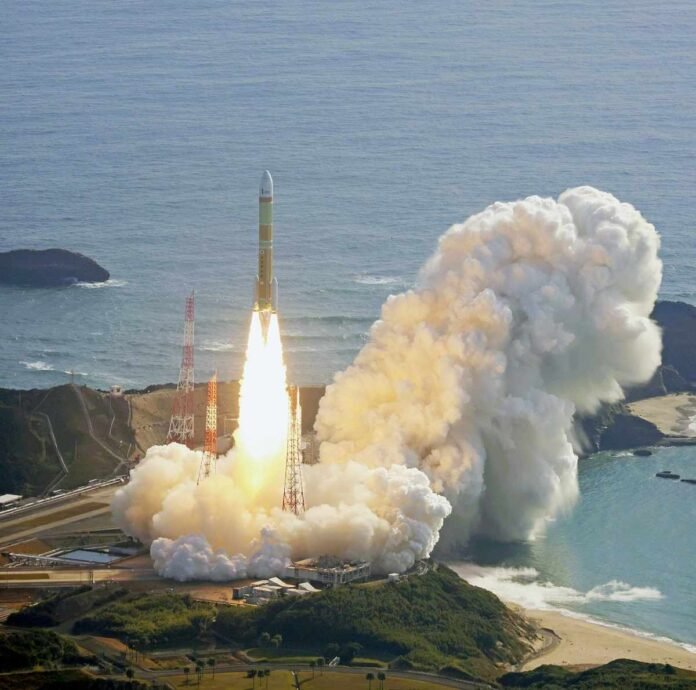The H3 rocket takes to the air.
17:20 JST, February 17, 2024
Japan’s new H3 rocket lifted off from the Tanegashima Space Center in Kagoshima Prefecture at 9:22 a.m. on Saturday. The rocket successfully reached its planned orbit, the Japan Aerospace Exploration Agency said.
The H3 rocket is Japan’s next flagship rocket, which is expected to play a key role in the country’s space activities and exploration in the future. By putting the rocket into practice, Japan aims to fully participate in the increasingly fierce international competition for space exploration.
According to JAXA, the second H3 rocket reached its intended trajectory and successfully ignited the rocket’s second stage engine approximately five minutes after launch. When the first H3 rocket launched in March 2023, the second stage engine failed to ignite.
About 16 minutes later, the rocket reached its target altitude to release one of the satellites it was carrying. The release of a dummy satellite plus two microsatellites was later confirmed.
Joint development of the H3 rocket began in 2014 by JAXA and Mitsubishi Heavy Industries, Ltd., with the aim of making it a successor to the current mainstay H2A rocket.
However, rocket development encountered difficulties and the launch of the first H3 rocket was postponed twice. When the first H3 rocket was launched in March last year, it had to be deliberately destroyed after the vehicle’s second stage engine failed to ignite due to excessive current generated in the engine’s electrical system. The advanced land observation satellite Daichi-3, which was on board, was also lost. JAXA investigated the causes and factors of the failure and took measures for the ignition of the second-stage engine and other components in preparation for the second test of the H3 rocket on Saturday.
The second H3 rocket is 57 meters long and 5.2 meters in diameter. This time the rocket was not carrying important government satellites due to the risk of failure. On the other side, the rocket carried the two microsatellites and a dummy satellite that approximated the weight of the Daichi-3. With this, JAXA tested the launch performance of the vehicle.



